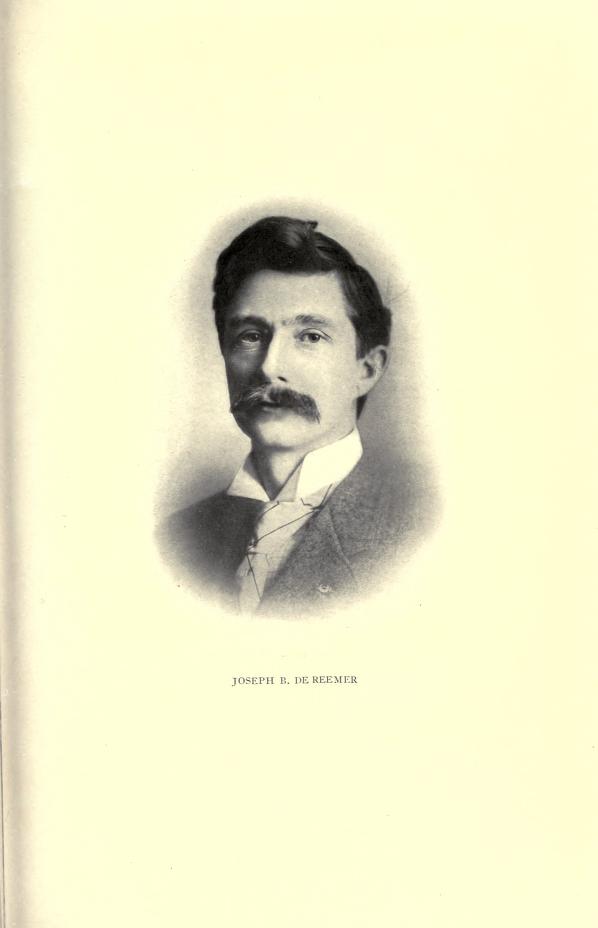Joseph Bell DeRemer, born September 14, 1871, in Montana, New Jersey, was a significant architect in Grand Forks, North Dakota. Son of James K. Polk and Nancy (Bell) DeRemer, he studied architecture at Columbia University after working as a carpenter. Moving to Grand Forks in 1902, DeRemer designed notable buildings such as the Y.M.C.A. and the Widlund building. He was a member of various professional and civic organizations and served briefly as an alderman in New Jersey. DeRemer married Elizabeth Meyers in 1891, and they had two children, Delores and Samuel.
Joseph Bell DeRemer, of Grand Forks, was born September 14, 1871, in Montana, Warren county, New Jersey. His father was James K. Polk DeRemer and his mother Nancy (Bell) DeRemer. He received his education in the common school at New Village, Warren county, New Jersey. Later he was a special student in architecture at Columbia University, New York city. He followed the occupation of a carpenter from March, 1886, to May 1, 1896, and made himself a master of the trade, also devoting himself to the study of the building art. He then entered Columbia University, taking a special course in architecture, which he completed in June, 1897. He began the practice of architecture at Washington, Warren county, New Jersey, continuing there until he removed to North Dakota in March, 1902, when he located in Grand Forks and has since been a resident of this city.
Although a resident of the Red River valley but comparatively a few years, it may be said that no one man has had a wider influence in the lives of its people or has built a more enduring monument to his career among them than has Mr. DeRemer. While devoting himself assiduously to the practice of his profession the work he has accomplished has not been wrought entirely on paper, nor even in the splendid and enduring structures he has created. His building has been to a very material extent on the minds of the people among whom he has labored and who have had an opportunity to see his creations. During the early history of the Red River valley life was chiefly one continued “hustle,” a continual strife to extract from the depths of the far-famed soil the wealth of which the fame had already gone around the world. Men had little time or thought for the niceties of life. The business block was an unpretentious box of larger or smaller dimensions, to be enlarged as the rapidly multiplying business created a demand, and the business man’s home was but little more than a box with more or less partitions. Gradually there came about improved conditions in this respect however. Rapidly acquired wealth or capital seeking investment furnished a way for the construction of more substantial and enduring buildings. We were so far removed, however, from examples of the beautiful in architecture that there was little stimulus for attempt at beautifying either commercial or other structures, beyond the addition of a moulding here and there or an ornamented frieze or cornice. It was not long after the arrival of Mr. DeRemer, however, before he had created some object lessons in this direction which have been teaching the people day by day, and the lesson has been almost contagious. No visitor in Grand Forks, from the inland cities and towns of the state views the stately Y. M. C. A. building, for instance, but goes home with a desire to see improved architectural conditions in his home town. Other structures designed by Mr. DeRemer, such as the Ontario store building, the Widlund building, the first fireproof office building in the state; the McCoy residence or the president’s house at the university, the new Mann building at Devil’s lake, the public library at Grafton, and many fine schools and other buildings over the state, are exerting an influence day by day and year by year in the cultivation of a love for the beautiful which is bearing fruit and will continue to do so for years to come.
Mr. DeRemer, although a public-spirited citizen, has never been inclined to political activity, and the only public office he ever held was that of alderman in “Washington, N. J. He is a member of the Society of Columbia University Architects, Commercial Club of Grand Forks, the Town and Country Club and the Y. M. C. A., of which he is a director; the Junior Order of United American Mechanics, Washington, N. J.; Knights of Malta, Grand Forks Lodge No. 255, B. P. O. E. A. and A., Scottish Rite, and Mecca Temple, New York city, A. O. N. M. S.
Mr. DeRemer was married November 11, 1891, at Stewartsville, Warren county, New Jersey, to Elizabeth Meyers, of Stewartsville. They have two children, Miss Delores DeRemer and Master Samuel Teel DeRemer.
Source
C.F. Cooper & Company, History of the Red River Valley, Past And Present: Including an Account of the Counties, Cities, Towns And Villages of the Valley From the Time of Their First Settlement And Formation, volumes 1-2; Grand Forks: Herald printing company, 1909.

